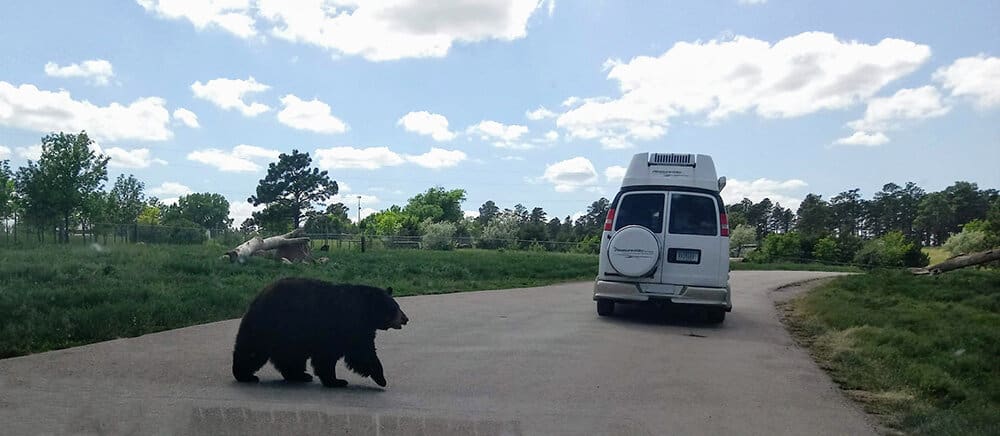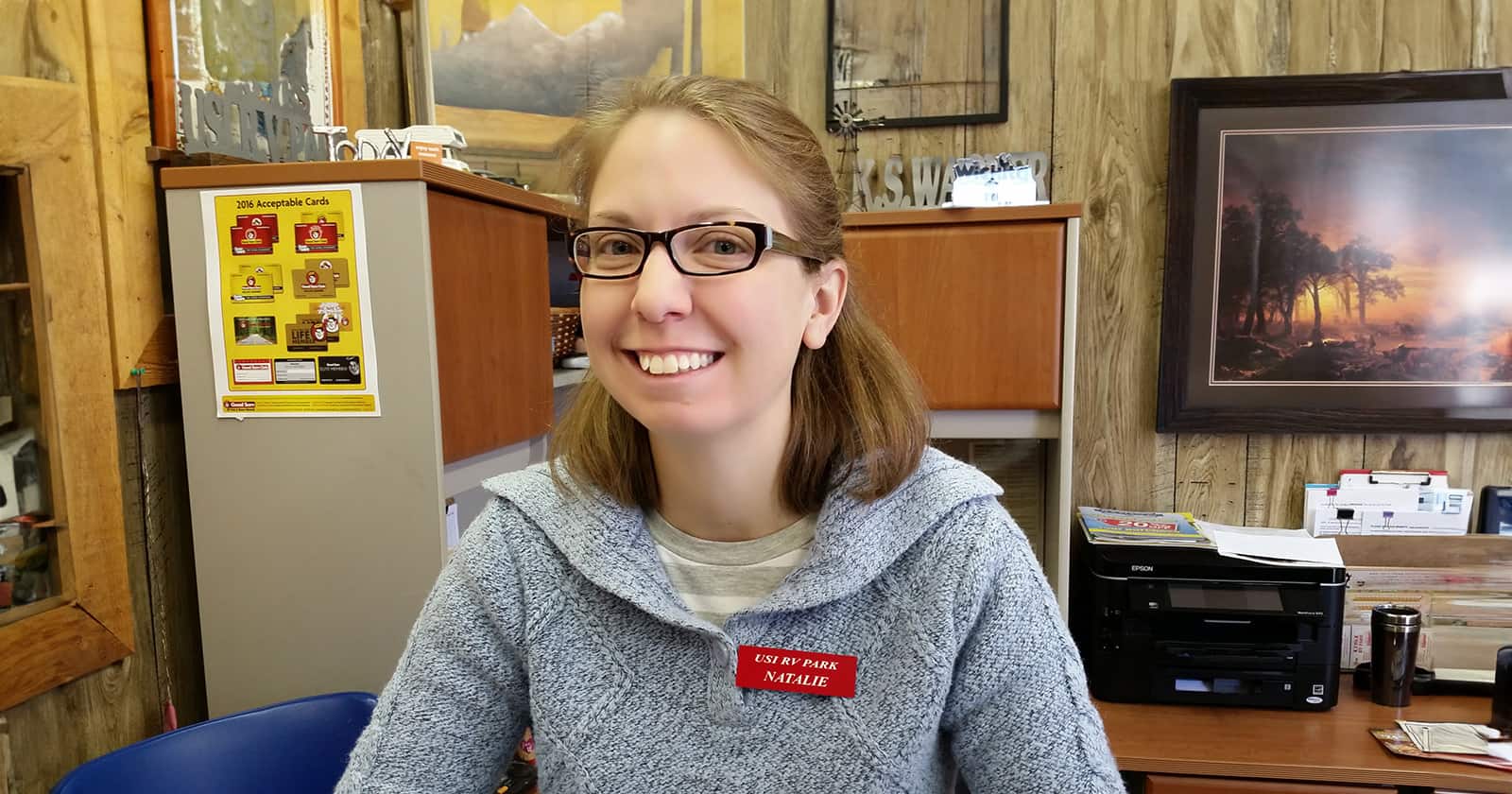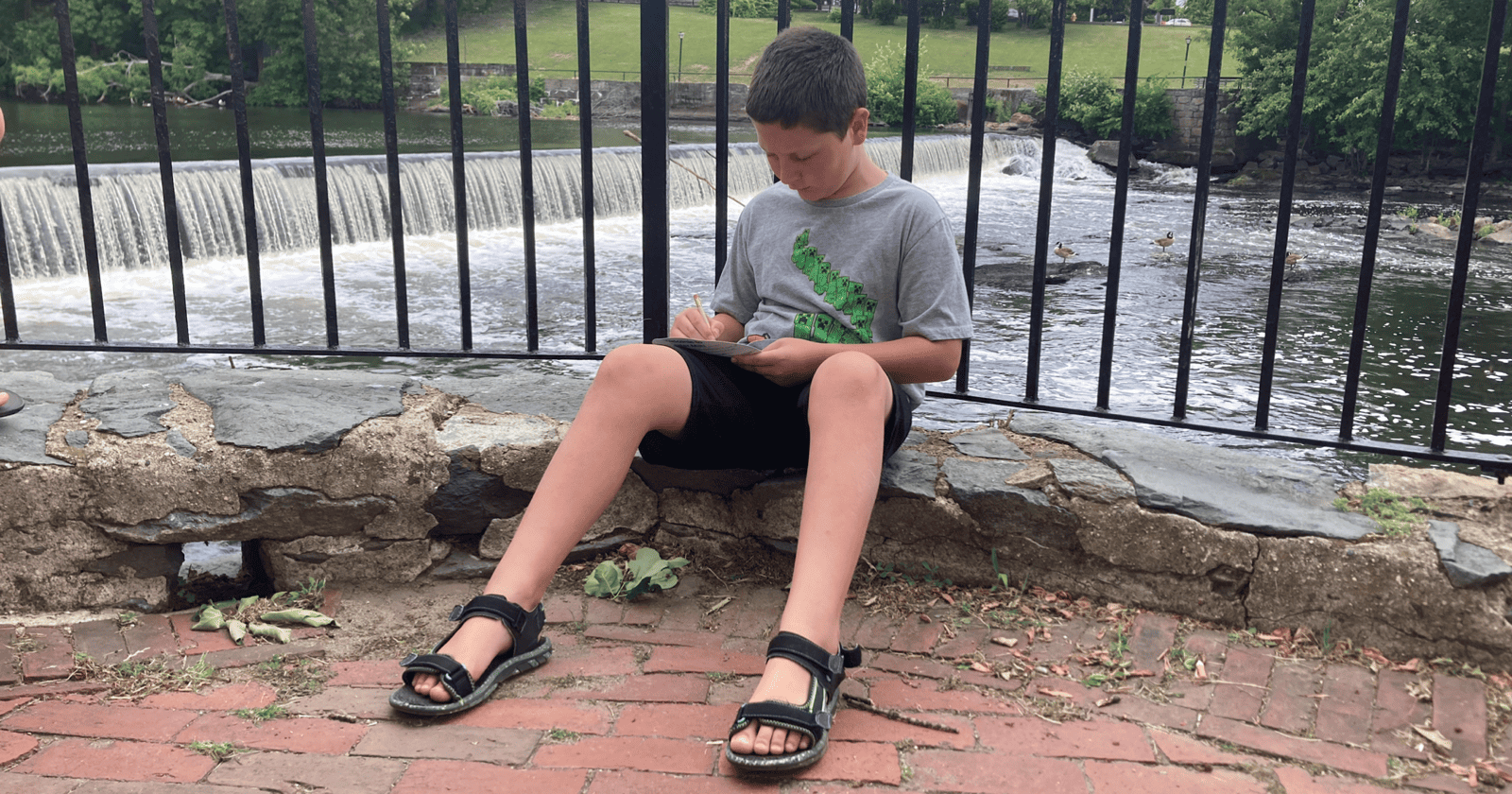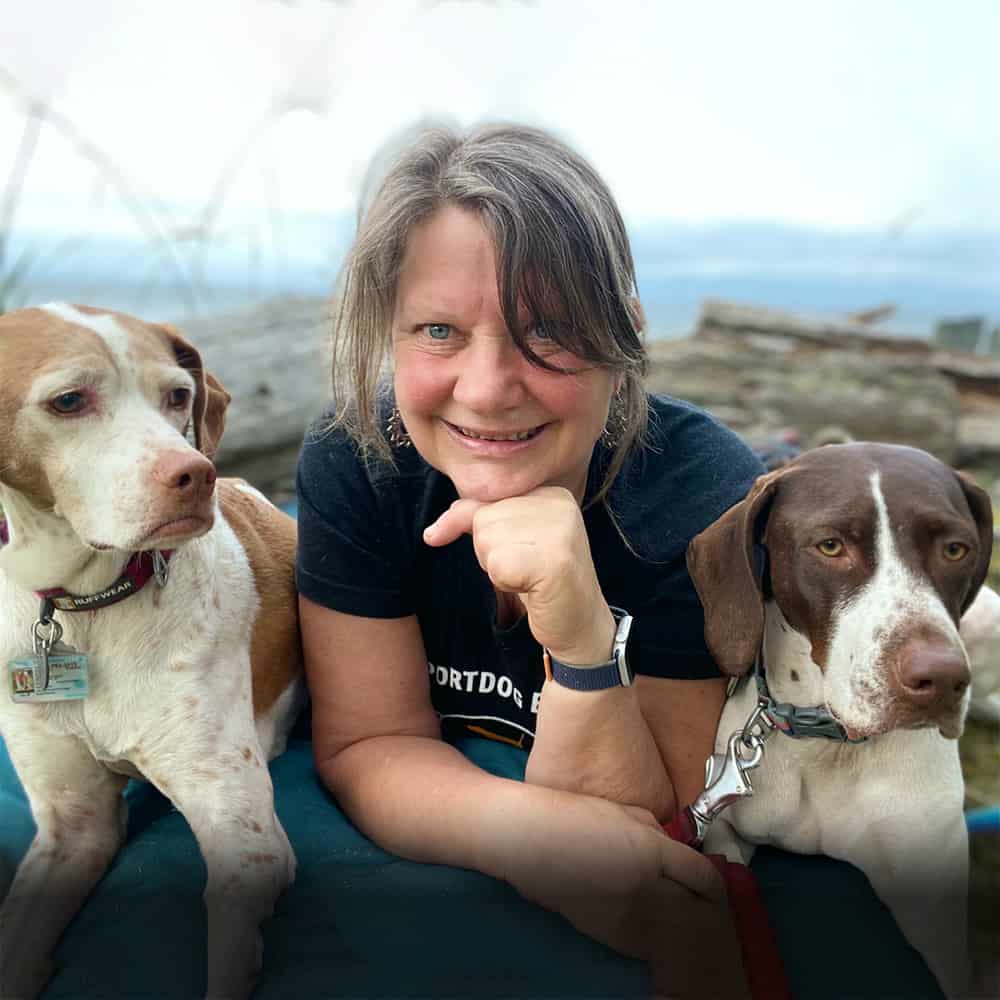Solo RVing Travel Can Be Safe, Fun, and Full of Freedom
No partner? No problem! That’s what many RVers who choose to hit the road to travel solo are saying these days. While most solo RVers will admit that there are advantages to traveling with a partner, the freedom of solo travel in an RV is addicting for many of us. Not having to plan our schedules around another person’s schedule, decorating the RV how we like, and being able to go where we want, when we want are just some of the reasons many people love solo travel in an RV.
Why Is Solo RV Travel Daunting?
Hitting the road can be daunting for those just starting on a solo RV trip. Why is this? To begin with, solo travel in an RV is complete and inextricable freedom. But, believe it or not, unfettered freedom can be scary. We all get used to the patterns and habits we have built around ourselves. Even ruts we have made for ourselves sometimes nestle us with a sort of cold comfort. So when suddenly faced with the absolute freedom to live out our dreams and the ability to do anything we want, can be daunting. And then there are the doubts about the practicalities of traveling solo in an RV.
Newbie solo RVers, especially female solo RVers, expressed the following concerns when asked what they found daunting about solo RV travel:
- Driving the RV
- Backing the RV into a campsite
- Wildlife encounters
- Unfriendly human encounters
- What if I get lonely on my own?
- What if the RV breaks down?
- What if I’m in an accident?
Preparation Is Key To Solo RV Travel Success
There is nothing to fear but fear itself when it comes to solo RV travel. However, a little planning and preparation will go a long way to keeping you safe and happy on your travels. By planning for the best and preparing for the worst, we can avoid problems or minimize their impact on our adventures.
16 Tips To Help You Get The Most Out Of Solo Travel
1. Safety First
Always prioritize your safety over anything else. Listen to your gut feelings when it comes to campsites or boondocking spots. Does the campground have an overall neglected appearance? If you are boondocking, is there a lot of litter in the area? Trust your instincts and use common sense when choosing a campsite. If one place looks sketchy, don’t worry. There are always other places to camp nearby.
2. Carry a First Aid Kit and Know How To Use It
It’s always good to have a well-stocked first-aid kit handy in the RV and in your tow vehicle. Also, take a first aid course so you can confidently deal with any emergency that comes along. Taking a CPR course will be a well-spent few hours if someone nearby has heart failure. If you have a dog or cat traveling with you, be sure to carry a first aid kit that will meet their needs too, and familiarize yourself with the first aid steps to treating a snakebite for both pets and humans if you travel in areas that are home to venomous snakes.
4. Have Your RV and Tow Vehicle Inspected and Serviced
It’s better to avoid a problem than to have to deal with one. Always have your RV and tow vehicle thoroughly inspected and serviced before taking off on a solo adventure. Make sure all of your tires are in good shape and have the correct amount of air in them. Proper maintenance will help prevent being stuck on the side of the road.
3. Have a Contingency Plan for Everything
Having a “Plan B” backup plan for everything will help to keep you from panicking if plans go awry. Be sure to have funds set aside if your vehicle needs work on the road and you need to stay in a hotel or other accommodation.
4. Make Sure Someone Knows Your Solo Travel Plans
Always let someone know your route and when you plan to get there. That way, if something happens, loved ones will know where to begin looking for you.
5. Bring Paper Maps
Google Maps is a handy app when it works. Google Maps are also notorious for sometimes choosing questionable routes that can get us into trouble if we are in an RV or towing a trailer. Map apps are also frequently useless if you don’t have cellular service. It’s a good idea to carry old-fashioned (but current) paper maps to refer to if you need them.
6. Use the RV LIFE Trip Wizard Trip Planning App
The RV LIFE Trip Wizard App is an amazing app that allows you to fully plan out a trip. From routes to fuel stops to accommodations in your budget, you’ll find it all on RV LIFE Trip Wizard. What’s more, you’ll be able to refer to it when cell signals are weak or nonexistent. The RV LIFE Trip Wizard trip planner integrates seamlessly with the RV LIFE RV Safe GPS app, giving you turn-by-turn directions for your route. You can also download all the maps for your route ahead of time, so no internet connection is necessary to navigate on the way.
8. Use Towing Mirrors on Your Tow Vehicle
Towing mirrors will really help to enhance your ability to navigate safe lane changes or to back your rig into a campsite. Being more confident and safe when towing your RV will help reduce stress when traveling solo.
7. Practice Driving or Towing Your RV
It’s a good idea to practice driving or towing your RV before you set out on a “real” trip. An empty parking lot will provide the perfect place to practice backing into a campsite.
8. Bring a Dog (or Two) on Your Solo Travel Adventures
Dogs are amazing traveling companions. We love how our dogs always want to go wherever we want to go. A dog can also alert us if something unusual is going on at the campsite at night and can provide an early warning system. When we travel with dogs, it’s a good idea to take the following precautions:
- Have your dog wear a collar or harness with an ID tag with a current phone number and a cardboard tag with your campsite number on it too.
- Carry up to date veterinary information, including vaccine records.
- Find out where the nearest veterinarian is to the campground.
- Keep your dog on a leash or in a fenced area when he isn’t in the RV.
9. Belong to An Auto/RV Association
Membership with an RV roadside assistance association like Coachnet or AAA can get you out of a jam if your RV breaks down on the road.
10. Take Frequent Breaks Whether Solo RVing or Not
Driving can be deceptively tiring. Take frequent rest breaks to stretch, walk around and take in the local sights to help you avoid accidents and keep the shiny side up.
11. Don’t Drive More than 5 hours/day
Keeping driving time to a minimum will also help you be safe on the road. Try to keep driving time to less than 5 hours per day. That’s about a 7-8 hour day if you take at least a 30-minute break after two hours, stop again for a longer lunch break, and then get settled into your stop for the night.
12. Get to The Campsite Early
Getting to the campsite before 3 pm will allow you to get set up in your campsite before it gets dark and before dinnertime. In other words, you won’t have to set up camp in the dark, and you won’t be hungry when you pull in.
13. Avoid Solo Travel Before or After Long Weekends
Traffic and even getting a campsite can make traveling before or after a long weekend very stressful. Avoid adding stress to your travels by choosing to travel three days before or after a long weekend.
14. Use an Instant Pot
Using an Instant Pot makes it easy to make delicious meals ahead of time. Use your Instant Pot to make stews or chili that you can pack into individual containers for easy microwavable meals on the road.
15. Don’t Attract Wildlife

Photo was taken at Bear Country USA, SD
It’s easy to avoid attracting bears, raccoons, or other wildlife to your campsite. Wild animals come to campsites looking for free and easy food. You can avoid attracting bears by not cooking strong-smelling food like bacon or fish in a heavily populated bear country. Keep your campsite clean and tidy, and don’t leave food wrappers, pet food, or trash outside the RV. It’s a good idea to put the trash into trash bins provided by the RV park at the end of each day.
16. Relax and Enjoy the Journey
Slow down and see the sights. Embrace every moment as it arrives.
Tell Us Your Solo Travel Tips
Do you have a Solo RVing tip or travel experience you’d like to share? Tell us about it in the comments below or join the RVing community online. One of the best parts about RVing is engaging with the community of traveling enthusiasts. iRV2 forums allow folks to chat with other RVers online and get other perspectives on everything RVing, including products, destinations, RV mods, and much more.





Love solo traveling. I have a partner right now and regret it. We travel too long, go the way he wants to go, do what he wants to do. When I soloed it was what I wanted to do and go. I wasn’t lonesome at all. I gave my Dog.
For “newbies”; if you THINK you can be a Solo (or regular) RVer, you’re right!
If you think you can’t be a Solo (or regular) RVer, you’re right.
The good news is that YOU get to decide if you want to think positively or negatively.
I recommend that a newbie start small. I started with a 17′ fiberglass “egg” travel trailer that I could SAFELY pull with the minivan I then owned. It was a Casita but, there are several “egg” trailer builders (Scamp, Oliver, Escape, Bigfoot and others). MOST fiberglass “eggs” are build better than “standard” RVs and are easy to maintain. Probably the BEST first step a newbie can take would be to attend an RV Boot Camp. Escapees, FMCA, RVSEF and other groups offer this important educational product that usually runs over a weekend. In that time, your questions will be answered and the “nuts & bolts” of RVing are explained & demystified (weight ratings, systems found on an RV and much, much more. LOTS of instructional videos can be found on YouTube and specialty websites. “RVTravel.com” is a free resource e-newsletter that provides a WEALTH of good information. Class C RVs can be rented in many places so that newbies can “test the waters” BEFORE they spend BIG bucks only to find RVing is not their “cup of tea”. If you decide that you like the RV lifestyle after you’ve tried it via a rental, you’ll be in a MUCH better position to start shopping for an RV that would suit YOUR needs. I hope this helps!
I have been traveling solo since 2013 and all of your tips are all very good and I agree with all of them. However #8 Traveling with a dog needs some
additional information for folks to consider. Traveling with a dog has drawbacks I traveled with one 2013 to 2017 or 5 years but have not had a dog since 2017 which has now been 5 years. I do a lot of photography and I am often out for the whole day and more often than not you can not take your dog on hikes so you either have to get dogwalker or break the day in two parts so you can take care of the dogs needs give the dog bathroom, which can mean driving several miles to do this.
T
The seven daunting things Solo Woman Travelers fear…
I have been a solo female wanderer for over 16 years in my RV with a small dog. I must have over 150,000 miles behind me. We have extensively traveled throughout the US, all provinces of Canada and Alaska.
I have encountered all of these things at one time or another.
I have learned to stay calm, take a deep breath, step up to the challenge. Stressed and angry (don’t yell) it’s not going to solve your problem), learn something about your challenge. From this experience you could help yourself again or someone else in the future.
Always follow your gut feeling, if it doesn’t feel right, don’t stay in the situation. Turn the key on and go somewhere else.
I’ve done that a couple times, found a better spot because of it. I primarily boondock.
Excellent advice- I find I follow pretty much all of them! One thing I am going to change however is that I often make my reservation for one instead of two people and there’s never an additional cost for two people so I think I’m going to stick to making it for two- not one for additional safety/security.
I started with an 18 foot Class C. Now have a 24’ B+/C
When I first got my old one, I went onto rv.net onto “rallies and gatherings” and signed up for an RV rally about four hours from my house – I ended up attending probably six of those rallies and made very very good friends that I still connect with and camp with. I also joined another RV travel club that has a rally every month and I have met some really nice people at those rallies as well.
I really like RV trip Wizard and have used it for two long trips- I have been through Zion, Bryce, Canyonlands, Dead Horse State Park, Moab and Arches , Valley of fire, Kolob Canyon, Idaho, Oregon, Wyoming. South Dakota, Custer, Crazy Horse. Badlands, Colorado, RMNP, Crater Lake, Arizona and California., to name a few places. . Heading to Indiana, Kentucky, Tennessee and Arkansas later this year. I think I’ve put about 15,000 miles on this motorhome since I bought it in August 2020. I actually prefer traveling by myself rather than having somebody with me as well.
One addition to my motorhome that I think also adds to security is having a tire pressure monitoring system – I bought a TPMS system which was not that expensive and works really well – and make sure you have the tire pressure valve adjustment tool so you can tighten the valves if you’re losing air and it’s not because of a problem with the tire -it might be the valve.
As much as I make it a habit to look in my hand at least twice when I get out of my motorhome before I hit “lock all doors” – I did manage to lock my keys in the motorhome in Wyoming – fortunately I was at a large service station with a subway and grocery store so I was in a safe place to call for help but it took almost 2 hours for someone to come and unlock the door – which can be very very easily done so that is something to consider.
And for safety sake I almost always refill my tank when I’m at half a tank unless I know I will be close to my destination within 100 miles then I may wait until I get to the destination and I generally try to fill up before getting to the RV park so I’m good to go in the am.
Keep the good tips coming!!
I also used to only carry the door, not cab key with me around the campsites and I had a lock malfunction where the piece breaks off inside the lock and you are locked in or locked out. If I had been outside and it broke I would not have been able to get into my RV so I always carry the cab key and the door key and I plan to put a hide a key somewhere in the event I locked myself out again!!
In summary always have backup plans for everything you can think of. And this includes membership of AAA and/or Good Sam Club, just in case.
And also, just in case you find yourself in an area with no cellphone service, buy a satellite SOS device and basic subscription so you can call for help from anywhere. I would recommend the Garmin inReach Mini 2 along with Garmin’s subscription plan.
Instead of a One-Pot, I make use of a Hot Logic, an insulated plug-in food heater the size of a lunch box, to heat food while I am driving to a destination. It plugs into my 12-V cigarette lighter port and will heat fresh or frozen dinners (homemade or store-bought) to the proper temperature. When I arrive at camp, dinner is ready to eat. It’s the perfect size for soloing and doesn’t take up much room to store nor does it weigh much.
My wife and I use a hot logic. A great tool to have.